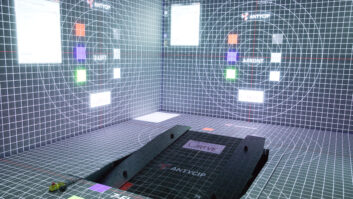
Today there is a lot to read about the new workplace environment within the enterprise by giving employees the tools and environment they need (and crave) to work in a more collaborative and efficient manner.
But delivering the infrastructure isn’t enough. Many meetings still lack the level of productivity desired, which creates frustration, which then leads to inefficiency and huge hidden costs.
Just consider this: an average meeting room accommodates six people and is used for around six hours a day. If every meeting has a 10 minute delay because of technology not working, doing as it should, or simply too confusing, leaving people sitting around idol. At an average cost of 100 euros per hour per employee, that could give you a loss of 120,000 euros per room per year.
Reasons for these delays are often caused by limited room scheduling functionality and AV equipment. All of these can easily be overcome. Let’s take a look…
Room scheduling
Many scheduling softwares only provide the number of participants and location but ignore the in-room technology.
If you need to do a video call but the scheduling software doesn’t provide you the info of available technology in that room, you might end up in a room without this function.
Office spaces can be large and sometimes difficult to navigate. During the course of a day, workers go from meeting to meeting. Sometimes the meeting spaces are spread out across multiple floors and buildings.
As enterprises are more and more opting for flex desks and promote homework, it is not unthinkable that you don’t know all rooms in the building. Lacking familiarity with a building or campus enhances their stress level, as they try to find their way. By the time they arrive — if they make it on time — they’re in a frustrated state. This can cause significant negatively impact their effectiveness.
In-room technology
I think we all have experienced this: Having trouble to get your laptop image on the display in the room. Not having the correct adaptor, finding the displays remote and figuring out how to switch it to the correct input, etc.. are just two of the many issues people have with in-room technology. Besides the wasted cost, delays and frustration it causes that meeting organisers avoid more than half of the available rooms and thus inefficient
IoT can help us with this:
Proximity beacons can give us GPS-like navigation to locate the room you need to be in smartphones can detect these beacons and besides allowing you to find your way, also might offer in-room control of the equipment in the room you are located.
It can even go further and by walking in the room, the display is powered on and provide you info on how to present in the room or make your remote video call.
Voice control of engines like Amazon Alexa are also becoming more and more common in the enterprise to help people book rooms, startup a room and control the technology.
There are many examples where IoT can help us in our work life but also for facility this brings in many benefits.
Having data pushed on the network by all devices creates a more accurate overview of what is going on in the building and with the actual equipment. Allowing inventory management, remote monitoring, better investments and predictive maintenance.
Avoiding people to book rooms with a broken display for example.
A basic room booking software might give you data of the room usage but not the in-room equipment usage. By combining both, you can make sure employees are using the right meeting room for the right meeting type. For example: No internal meetings in video conference rooms.







